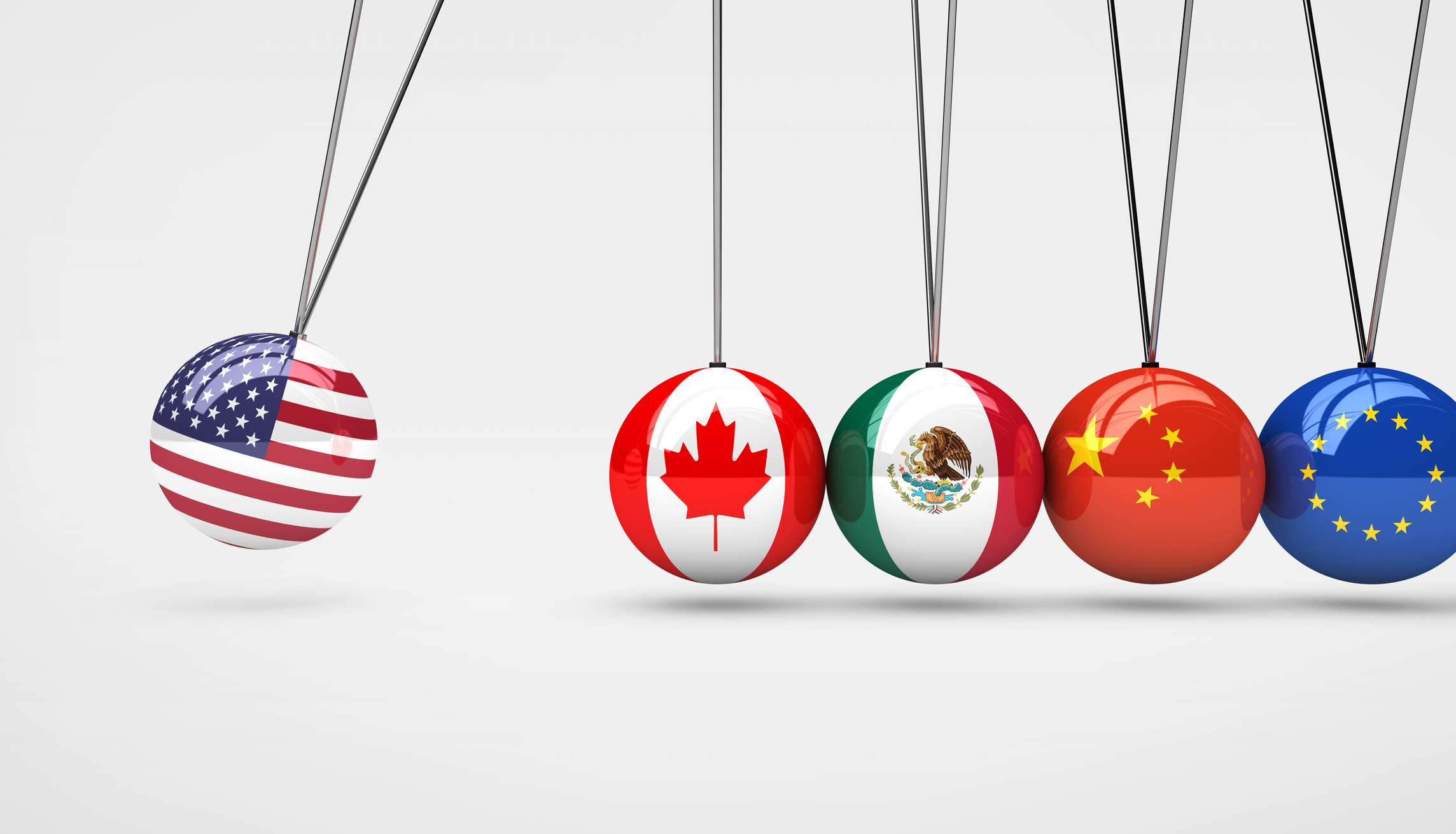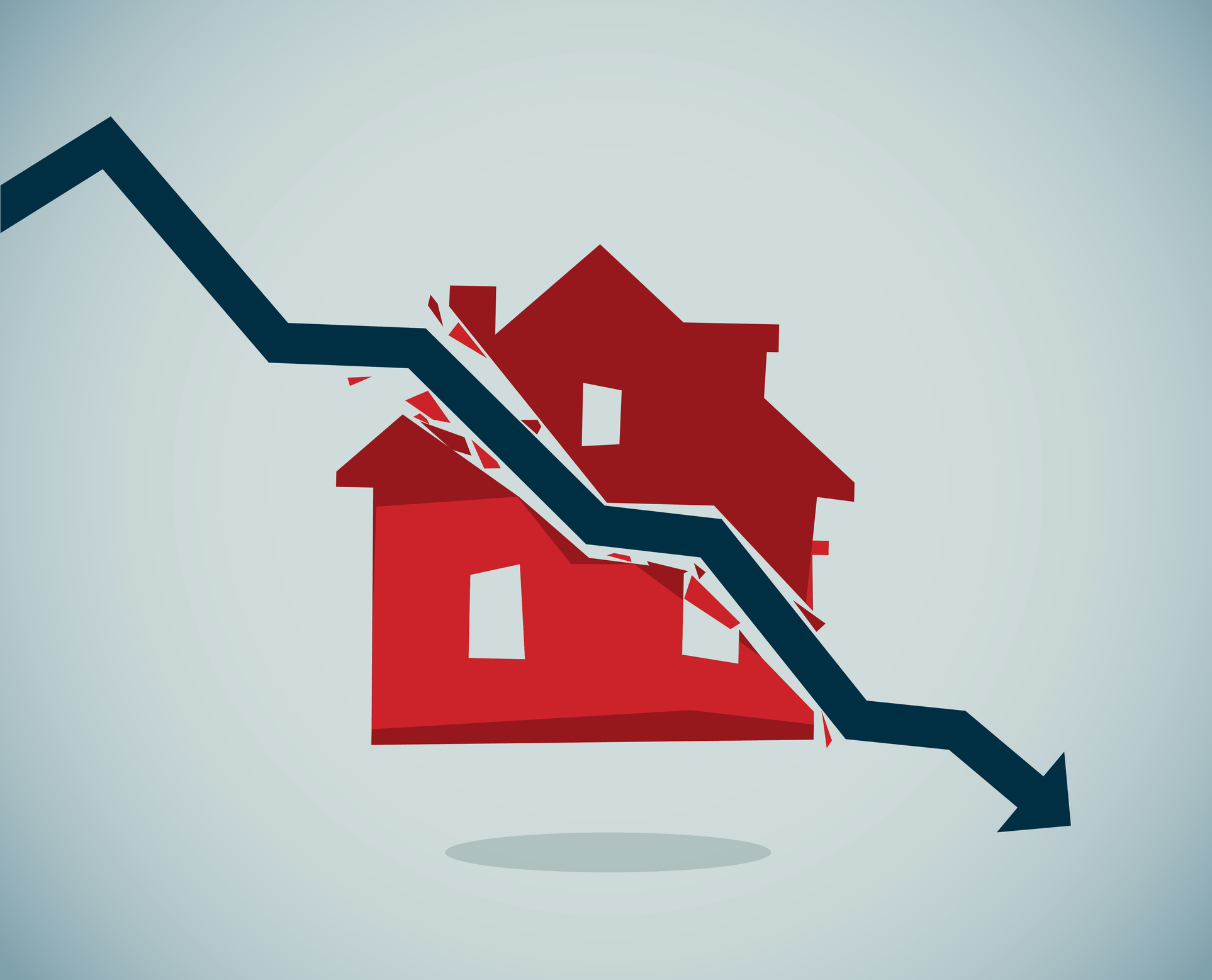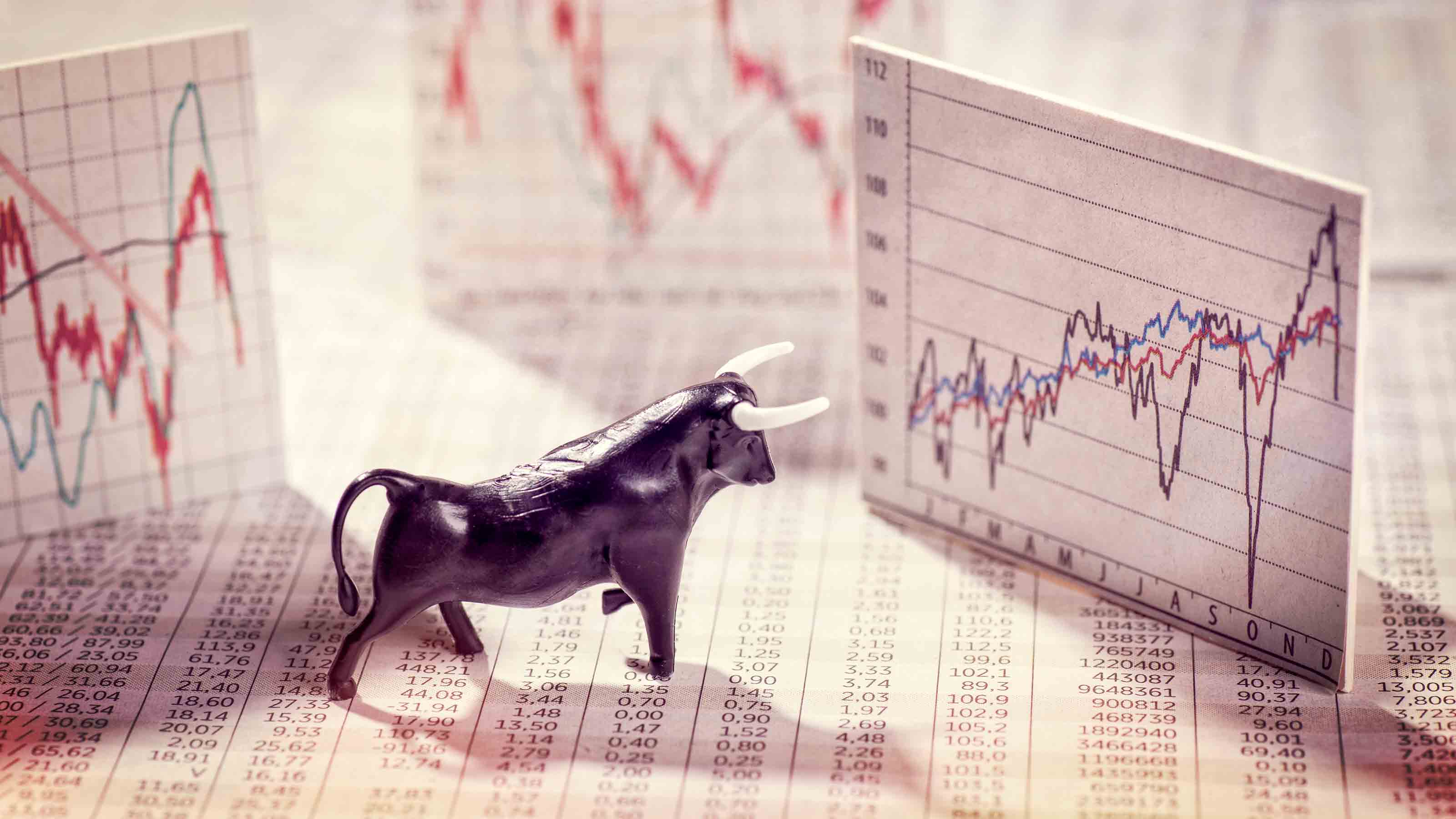Best Investments to Sidestep Trump's Trade War
These ETFs are well-designed to weather rising U.S. protectionism and retaliatory tariffs.


While many pundits suggested President Donald Trump’s real-world trade policies wouldn’t be as bad as his campaign rhetoric was last year, the stock market got a rude awakening in April. Executive orders from the White House sent the S&P 500 into free-fall thanks to what many saw as overly invasive tariffs, with the index down an ugly 13% since January 1.
Among other ignominious milestones caused by Trump’s tariffs, we’ve seen the worst short-term performance for stocks under any sitting president in modern history, per CNN, and the worst single-day decline since the realities of COVID-19 hit investors in 2020.
While some hold out hope that Trump is simply making an opening bid in a longer-term negotiation on global trade, a prolonged trade war would have serious consequences for portfolios as tariffs impact the stock market beyond the immediate volatility we’ve seen in early 2025. Exposure to select sectors could mitigate these risks, however, as certain companies are more susceptible to the negative influence of tariffs than others.

Sign up for Kiplinger’s Free E-Newsletters
Profit and prosper with the best of expert advice on investing, taxes, retirement, personal finance and more - straight to your e-mail.
Profit and prosper with the best of expert advice - straight to your e-mail.
The following investment themes and the exchange-traded funds that express them could help protect risk-averse investors in the years ahead.
All of these ETFs are well-established, with more than $500 million in assets. They're also affordable, with annual expense ratios of less than 0.35%.
China's technology stocks
A bitter truth of the current Trump trade war is that while the U.S. stock market has struggled, other regions – most notably China – have seen outperformance in 2025. In particular, China’s tech sector has been doing quite well thanks to home-grown hardware and an increasingly sophisticated workforce with experience in software and IT services.
At the top of the list of investments capitalizing on this theme is a nearly $8 billion exchange-traded fund, the KraneShares CSI China Internet ETF (KWEB). This technology-focused China ETF has managed to post a gain since January 1 even as the rest of Wall Street – and in particular, large cap tech stocks like Nvidia Corp. (NVDA) – have melted down dramatically. That’s thanks to top KWEB holdings including Alibaba Group Holdings (BABA), which is actually up more than 20% since January 1 while the Nasdaq 100 is down almost 18% in the same period.
The story is similar with Invesco China Technology ETF (CQQQ). This technology-focused ETF is only down slightly from January 1 through Monday, April 4. Many individual holdings in this China technology ETF have done well, including familiar leaders in the nation like Tencent Holdings (TCHEY) that has eked out a small gain YTD even as the S&P 500 has suffered.
In short, the “America first” approach seems to be hurting U.S. technology stocks (Wall Street is worried about Apple, for example) more than their international peers. That’s particularly true considering the domestic reliance on China hardware, while competitors in Asia avoid similar reliance – and now have a surplus of local goods to make the most of in the age of a trade war.
European banks
Another regional investment theme that has done quite well in 2025 is a focus on Europe – specifically, in EU financial institutions. And in many ways, that groundwork for that success predates Trump’s trade war by several years.
After the U.K.’s “Brexit” vote in 2016 and its official exit from the EU in 2020, policymakers focused on a capital markets union that was self-sufficient – from London, but also from New York and anywhere else. More recently, price shocks after the 2022 invasion of Ukraine by Russian aggressors sparked a sense of urgency to shore up energy supplies and manufacturing to make the region self-sufficient.
The result has been what policymakers call “strategic autonomy” for the collective of European Union member states, built on local banking that serves local needs. And the timing couldn’t be better for this approach, as EU banks increasingly boast better profitability and a more inward-focused business model.
As proof of the success, check out the iShares MSCI Europe Financials ETF (EUFN) that is up about 8% year-to-date as U.S. stocks have stumbled. Meanwhile, the leading Financial Select Sector SPDR Fund (XLF) of domestic banks has lost 8% in the same period.
Utilities
Turning back to U.S. investments, utilities are one of the most reliable investments on Wall Street and have a history of providing safe havens in troubled times. Electricity is a necessity for homes and businesses in the 21st century, so there's always strong baseline demand.
What's more, while there may be volatility in the energy products used to generate power, these costs are almost always passed through to end-users who don’t have much choice. The sector is highly regulated and very expensive to operate, meaning utility stocks tend to be regional monopolies that don't face true competitive forces.
As a result, domestic utility stocks and the Utilities Select Sector SPDR Fund (XLU) will likely provide a smoother ride than more risky parts of Wall Street. In fact, the ETF is trading just a bit under flat on the year to make it “less bad” than most other sector ETFs. Top holdings in this fund include leaders in the sector such as NextEra Energy (NEE), Southern Company (SO) and Duke Energy (DUK) that are collectively valued at more than $240 billion and aren’t going anywhere regardless of short-term trade wars.
Investment-grade bonds
If you were hoping for an interest rate cut in 2025, perhaps the largest bit of good news out of this tariff mess is the increasing odds of Federal Reserve action as a result of weak business sentiment. Inflationary pressures have been a consistent concern lately, but now the central bank can comfortably blame a supply-driven trade war instead of demand-driven pressures from an overheating economy.
If you're particularly interested in safety, bonds are a logical choice because they are far less volatile than stocks generally. Furthermore, they offer nearly guaranteed yield so you can still generate income in retirement without worrying about selling assets into a downtrend.
And lastly, the face value of bonds have an inverse relationship with interest rates – so if rates do get cut, the principal value of related assets actually goes up because these older and higher-yielding securities are more attractive.
Investment-grade bonds – a category that includes debt of government entities as well as blue-chip powerhouses with strong balance sheets – are the top-tier of the debt markets and are particularly attractive right now as a result of these factors. These are the opposite of junk bonds, which are riskier and speculative in nature.
Of course, buying individual bonds requires much more savvy than buying individual stocks. That's why a bond exchange-traded fund like the Vanguard Total Bond Market ETF (BND) is a good choice.
With more than $127 billion in assets under management and a portfolio of some 18,000 different bonds, the fund yields about 4.5%. It's also full of rock-solid investments such as U.S. Treasury bonds. What’s more, BND is actually up slightly on the year from a share price perspective to provide a sweetener on top of that income stream.
Gold and gold miners
Looking beyond stocks and bonds to alternative assets, gold is often seen as the ultimate safe-haven investment during times of uncertainty. And with a 13% gain since January 1 as most stocks have suffered big-time in 2025, it’s hard to argue with that logic.
As an uncorrelated asset, the precious metal has the ability to hang tough or even move higher even when the stock market is melting down. Gold is also a hedge against inflation that is expected to occur if global supply chains are disrupted by trade policies.
Whether you're looking for a hedge against rising prices or diversification beyond the typical asset classes, the iShares Gold Trust (IAU) is one of the more affordable ways to get direct exposure to gold prices
IAU charges just 0.25% in annual fees, or $25 on $10,000 invested, which is much less than investors might pay to store, insure or transact with physical gold bullion.
It’s worth noting that gold miners can also be a good bet thanks to what’s called “operational leverage.” In short, many mining companies can easily ramp up production without significantly adding to cost – meaning they win both on the price of their gold brought to market as well as increased volume.
For this reason, the $93 billion VanEck Gold Miners ETF (GDX) has surged 24% since January 1, and some of its top holdings like Agnico Eagle Mines Limited (AEM) have fared even better than that. Just keep in mind leverage works both ways, so the volatility may be just as dramatic if and when the momentum moves away from gold miners in the months ahead.
Related content
Profit and prosper with the best of Kiplinger's advice on investing, taxes, retirement, personal finance and much more. Delivered daily. Enter your email in the box and click Sign Me Up.

Jeff Reeves writes about equity markets and exchange-traded funds for Kiplinger. A veteran journalist with extensive capital markets experience, Jeff has written about Wall Street and investing since 2008. His work has appeared in numerous respected finance outlets, including CNBC, the Fox Business Network, the Wall Street Journal digital network, USA Today and CNN Money.
-
 Here's How Trump's Tax Bill Could Let Donors Avoid Capital Gains Tax
Here's How Trump's Tax Bill Could Let Donors Avoid Capital Gains TaxTax Policy As U.S. Senate Republicans mark up their version of the One Big Beautiful Bill Act, one provision could give some donors a major tax break.
-
 2025 SALT Cap Could Hurt Top 'Hidden Home Cost'
2025 SALT Cap Could Hurt Top 'Hidden Home Cost'Tax Deductions The latest GOP tax bill might make hidden homeowner costs worse for you. Here’s how.
-
 The Bull Case for the Second Half of 2025
The Bull Case for the Second Half of 2025This strategist sees a volatile market segueing to a strong close this year.
-
 7 Essential Investing Rules We All Should Know
7 Essential Investing Rules We All Should KnowThe best time to start investing is right now. That's just one vital rule investors should be familiar with. Here are six more.
-
 These Are the Key Tariff Issues to Watch in Coming Months
These Are the Key Tariff Issues to Watch in Coming MonthsWhile they're not dominating headlines right now, tariffs are not over. Some key dates are coming up fast that could upend markets all over again.
-
 Technology Unleashes the Power of Year-Round Tax-Loss Harvesting
Technology Unleashes the Power of Year-Round Tax-Loss HarvestingTech advancements have made it possible to continuously monitor and rebalance portfolios, allowing for harvesting losses throughout the year rather than just once a year.
-
 The Fiduciary Firewall: An Expert's Five-Step Guide to Honest Financial Planning
The Fiduciary Firewall: An Expert's Five-Step Guide to Honest Financial PlanningArmed with education and awareness, you can avoid unethical people in the financial industry by seeking fee-only fiduciaries and sharing your knowledge with others.
-
 Stock Market Today: Stocks Struggle to Sustain Gains
Stock Market Today: Stocks Struggle to Sustain GainsMixed messages from multiple sources continue to make for a messy market for investors, traders and speculators.
-
 What to Do and What Not to Do When Markets Get Turbulent
What to Do and What Not to Do When Markets Get TurbulentFollow these tips and strategies to help you navigate investing turbulence.
-
 What to Know About Treasury Inflation-Protected Securities (TIPS)
What to Know About Treasury Inflation-Protected Securities (TIPS)Understanding what Treasury Inflation-Protected Securities (TIPS) are and how to use them in a portfolio.